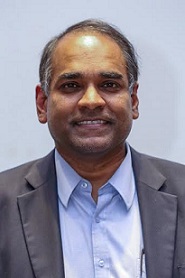 In this special guest feature, Murali Nadarajah of Xchanging talks about how organizations today are using predictive analytics, and how the ability to be predictive has – and will continue – to change the business landscape enabling the development of new approaches and products. Murali Nadarajah is Head of Data and Analytics at Xchanging, a multi-national, publicly-listed business technology and services provider. Xchanging supports the needs of customers in over 48 countries, employing more than 1,800 technology professionals.
In this special guest feature, Murali Nadarajah of Xchanging talks about how organizations today are using predictive analytics, and how the ability to be predictive has – and will continue – to change the business landscape enabling the development of new approaches and products. Murali Nadarajah is Head of Data and Analytics at Xchanging, a multi-national, publicly-listed business technology and services provider. Xchanging supports the needs of customers in over 48 countries, employing more than 1,800 technology professionals.
Every day, human beings create 2.5 quintillion bytes of data, according to IBM. This data comes from an incredible number of sources: sensors used to gather environmental information, posts on social media channels, smartphones, digital pictures and videos, transaction records and so on. Organizations are capitalizing on this slew of data by collecting and storing it, but the real value of the data comes in how it’s mined – in other words, how you turn it into valuable insights.
To deliver on this, the science of analytics has continued to evolve. We are able to analyze huge amounts of data today – and with the advent of new tools and methodologies – are no longer restricted to analyzing only what has happened in the past. We now have the power to be predictive.
Predictive analytics is essentially the interrogation of massive amounts of historical data, from various sources and in various forms, to identify causal relationships between data points and thus predict future outcomes. There are several practical applications of predictive analytics that are being utilized now by forward-thinking companies. Here are three examples of such applications:
Tonal Analysis – Historically, call centers have measured customer satisfaction based on metrics like average handling time, call abandon rate and customer surveys. With big data, we can actually listen to, and analyze, the tone of a customer’s voice over the course of a call. We can decide if, for example, the customer called in angry and left happy, or if they started neutral and left angry, and so on. This is called tonal analysis and, when combined with existing customer care reports, it can provide a much higher level of precision that you wouldn’t have had with traditional reporting.
Where tonal analysis becomes predictive is when it’s used by industries like debt recovery. Debt collectors can actually call an individual, tell them how much they owe, ask a few questions and then, based on the individual’s tone during the call, can predict the likelihood of recovering that debt. This allows the debt collector to focus their efforts on money they have a greater chance of seeing again.
Churn Analysis – Churn analysis is another way companies are using big data to predict customer behavior. By tracking the behavior of past customers, analyzing that data and applying that analysis to the current customer base, a company can determine which of its current customers are going to leave or drop-off the system. That insight can then be provided to the appropriate department to take action and retain the customer.
Video Analysis – Video is another source of data made possible by big data and data science. Previously thought to be too unstructured for software to intelligently analyze, now video data is being used to make predictions about what it captures on screen. This becomes really interesting when applied to building security, for example.
Think of the security system in a large office building. There are multiple cameras covering the interior and exterior of the building, and usually only a guard or two tasked with the monitoring of screens. Reality is that there are too many screens for any one person to accurately keep track of – but not for video analytics software. The software will continuously go through the video feed, looking for suspicious behavior and making judgements on the likelihood of people committing crimes or causing disturbances. One parameter it looks at is the background of the video. Smart thieves, if they know there is a CCTV camera in place, will turn the camera before committing whatever crime they plan to commit. By monitoring the background image, the video analytics software can notify the security team when a camera has been moved – in real-time – dispatching a security guard to the spot as quickly as possible.
Tonal, churn and video analysis are just three of the ways predictive analytics is being used in business today, and based on these things alone, it’s evident how powerful this type of technology can be. We still have a ways to go before facing the moral conundrum of leaving all of our decisions to machines, but big data is already beginning to impact all of our lives – from the smallest tasks we do to the biggest decisions we make – and it will only advance from here.
Sign up for the free insideBIGDATA newsletter.




Speak Your Mind